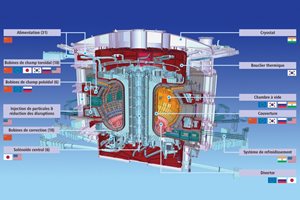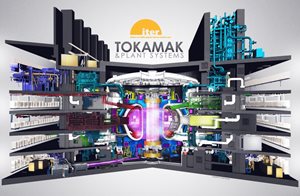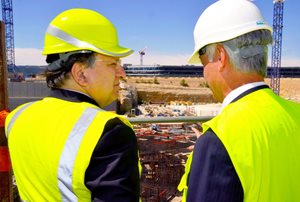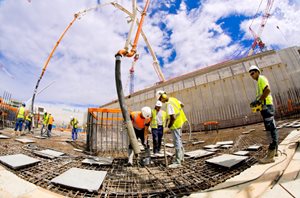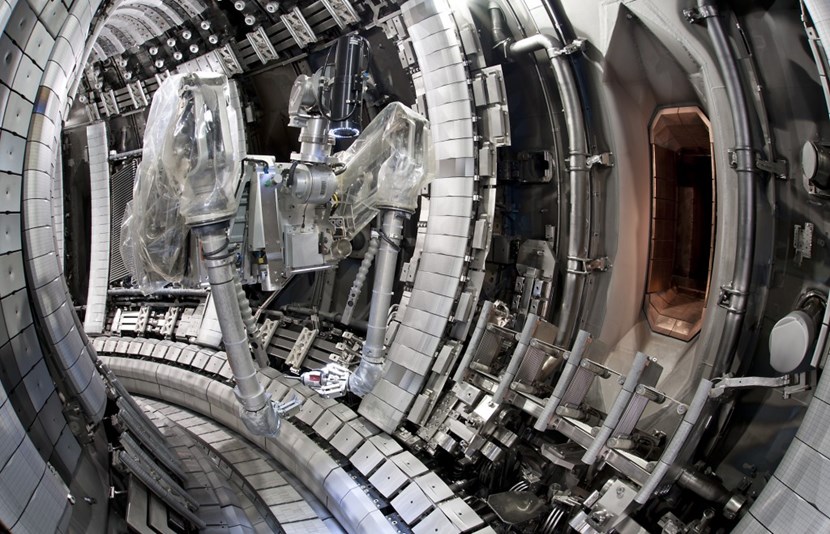The best combinations
Fusion reactions, obtained through the pairing of different isotopes of light elements, liberate on average four to five million times more energy than the most powerful chemical reaction such as the burning of coal, oil or gas. In the present state of fusion technology, the most efficient pairing is the reaction between two "heavy" isotopes of hydrogen—deuterium (D) and tritium (T).
D-T fusion, which is the reaction chosen for ITER and the first-generation fusion reactors, presents a certain number of challenges: tritium is radioactive and the impact of the high-energy neutrons produced by the fusion reaction will activate the internal components of the machine.
Other combinations of elements are conceivable with non-radioactive elements that produce no (or practically no) neutrons: it's the case of the helium isotope helium-3, for example, which can fuse with other helium-3 nuclei or with deuterium. Technically impossible to achieve today due to the extreme temperatures necessary for its realization, helium-3 fusion also presents another major disadvantage—the nearest deposits are captured within Moon rock.
The most 'ideal' reaction—which may be the source of power for the fusion reactors in the centuries to come—is proton-boron fusion. Completely aneutronic, this fusion reaction is the Holy Grail of researchers. Among its technical challenges: temperatures on the order of 6.5 billion degrees Celsius and a method of confinement that has not yet been invented ...
Outside of a short experimental campaign in 2003, when small amounts of tritium were added to deuterium plasmas, it has been 17 years since the last D-T fusion experiments were carried out at JET—17 years since a small, artificial star was briefly created on Earth.

